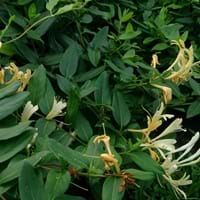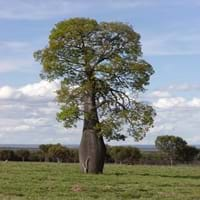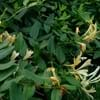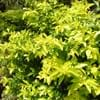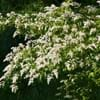Life Span
Perennial
Biennial
Type
Flowering Plants, Shrubs
Tree
Origin
Eastern Asia
Australia
Types
Not Available
Narrowleaf Bottle Tree, Pink Flame Tree, Rusty Kurrajong
Number of Varieties
Not Available
Habitat
Barren waste areas, disturbed sites, Fields, Forests, Wet lands
Subtropical climates, Subtropical forests
USDA Hardiness Zone
4-11
9-11
AHS Heat Zone
Not Available
12-9
Sunset Zone
Not Available
H1, H2, 15, 16, 17, 18, 19, 20, 21, 22, 23, 24
Habit
Cushion/Mound-forming
Upright/Erect
Flower Color
White, Yellow
Crimson, Orange Red
Flower Color Modifier
Bicolor
Bicolor
Fruit Color
Black
Dark Red, Sienna, Chocolate
Leaf Color in Spring
Green
Not Available
Leaf Color in Summer
Green
Red, Green, Light Green
Leaf Color in Fall
Green
Green
Leaf Color in Winter
Green
Green
Plant Season
Summer
Spring, Summer
Sunlight
Full Sun, Partial shade
Full Sun, Partial Sun
Type of Soil
Well drained
Loam, Sand
The pH of Soil
Neutral
Acidic, Neutral
Soil Drainage
Well drained
Well drained
Bloom Time
Late Winter, Spring, Summer
Early Spring, Spring, Late Spring, Early Summer
Tolerances
Drought
Pollution, Drought
Where to Plant?
Ground
Ground
How to Plant?
Layering, Seedlings, Stem Cutting
Grafting, Seedlings
Plant Maintenance
Medium
Medium
Watering Requirements
Get enough water whenever the soil is dry
Average Water Needs, Do Not over Water, Requires regular watering
In Summer
Lots of watering
Lots of watering
In Spring
Moderate
Moderate
In Winter
Average Water
Average Water
Soil pH
Neutral
Acidic, Neutral
Soil Type
Well drained
Loam, Sand
Soil Drainage Capacity
Well drained
Well drained
Sun Exposure
Full Sun
Full Sun, Partial Sun
Pruning
Remove dead or diseased plant parts
Remove branches, Remove damaged leaves, Remove dead branches, Remove dead leaves, Remove dead or diseased plant parts, Remove deadheads
Fertilizers
All-Purpose Liquid Fertilizer, General garden fertilizer
Nitrogen
Pests and Diseases
Not Available
Red blotch
Plant Tolerance
Drought
Drought, Pollution
Flower Petal Number
Single
Single
Foliage Texture
Not Available
Medium
Foliage Sheen
Not Available
Glossy
Attracts
Bees, Birds, Butterflies
Hummingbirds
Allergy
poisonous if ingested, Skin irritation
allergic reaction, Skin irritation
Aesthetic Uses
Showy Purposes
Showy Purposes
Beauty Benefits
Not Available
Not Available
Environmental Uses
Air purification, Food for birds
Air purification, Nesting sites for birds, Shadow Tree, Wildlife
Medicinal Uses
Fever, Sore throat, Stomach aliments
Not Available
Part of Plant Used
Flowers, Leaves
Root, Seeds
Other Uses
Making Perfumes, Used as Ornamental plant, Used for its medicinal properties
Used as Ornamental plant
Used As Indoor Plant
No
No
Used As Outdoor Plant
Yes
Yes
Garden Design
Container, Cutflower, Dried Flower/Everlasting, Groundcover, Mixed Border, Rock Garden / Wall
Feature Plant, Shade Trees, Street Trees, Tropical
Botanical Name
Lonicera japonica
BRACHYCHITON rupestris
Common Name
Japanese Honeysuckle, suikazura, jinyinhua
Australian Flame Tree, Flame Bottle Tree, Illawarra Flame Tree
In Hindi
जापानी Honeysuckle
बोतल ट्री
In German
Japanese Honeysuckle
Flaschenbaum
In French
Chèvrefeuille japonais
Bouteille Arbre
In Spanish
madreselva japonesa
Árbol de la botella
In Greek
Το ιαπωνικό αγιόκλημα
Μπουκάλι Δέντρο
In Portuguese
Honeysuckle japonês
Bottle Tree
In Polish
wiciokrzew japoński
Butelka Drzewo
In Latin
CISSANTHEMOS Italica
Utrem ligno
Phylum
Magnoliophyta
Magnoliophyta
Class
Magnoliopsida
Magnoliopsida
Order
Dipsacales
Malvales
Family
Caprifoliaceae
Sterculiaceae
Genus
Lonicera
brachychiton
Clade
Angiosperms, Asterids, Eudicots
Angiosperms, Eudicots, Rosids
Tribe
Not Available
Sterculieae
Subfamily
Not Available
Sterculioideae
Importance of Japanese Honeysuckle and Bottle Tree
Want to have the most appropriate plant for your garden? You might want to know the importance of Japanese Honeysuckle and Bottle Tree. Basically, these two plants vary in many aspects. Compare Japanese Honeysuckle and Bottle Tree as they differ in many characteristics such as their life, care, benefits, facts, etc. Every gardener must at least have the slightest clue about the plants he wants to plant in his garden. Compare their benefits, which differ in many ways like facts and uses. The medicinal use of Japanese Honeysuckle is Fever, Sore throat and Stomach aliments whereas of Bottle Tree is Not Available. Japanese Honeysuckle has beauty benefits as follows: Not Available while Bottle Tree has beauty benefits as follows: Not Available.
Compare Facts of Japanese Honeysuckle vs Bottle Tree
How to choose the best garden plant for your garden depending upon its facts? Here garden plant comparison will help you to solve this query. Compare the facts of Japanese Honeysuckle vs Bottle Tree and know which one to choose. As garden plants have benefits and other uses, allergy is also a major drawback of plants for some people. Allergic reactions of Japanese Honeysuckle are poisonous if ingested and Skin irritation whereas of Bottle Tree have allergic reaction and Skin irritation respectively. Having a fruit bearing plant in your garden can be a plus point of your garden. Japanese Honeysuckle has no showy fruits and Bottle Tree has showy fruits. Also Japanese Honeysuckle is flowering and Bottle Tree is not flowering . You can compare Japanese Honeysuckle and Bottle Tree facts and facts of other plants too.
